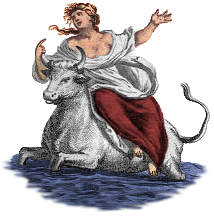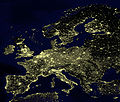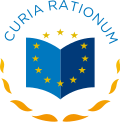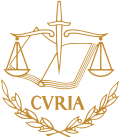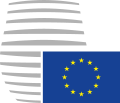Portal:European Union
Introduction
The European Union (EU) is a supranational political and economic union of 27 member states that are located primarily in Europe. The union has a total area of 4,233,255 km2 (1,634,469 sq mi) and an estimated total population of over 449 million. The EU is often described as a sui generis political entity combining the characteristics of both a federation and a confederation. Containing 5.5% of the world population in 2023, EU member states generated a nominal gross domestic product (GDP) of around €17.935 trillion in 2024, constituting approximately one sixth of global nominal GDP. Its cornerstone, the Customs Union, paved the way to establishing an internal single market based on standardised legal framework and legislation that applies in all member states in those matters, and only those matters, where the states have agreed to act as one. EU policies aim to ensure the free movement of people, goods, services and capital within the internal market; enact legislation in justice and home affairs; and maintain common policies on trade, agriculture, fisheries and regional development. Passport controls have been abolished for travel within the Schengen Area. The eurozone is a group composed of the 20 EU member states that have fully implemented the economic and monetary union and use the euro currency. Through the Common Foreign and Security Policy, the union has developed a role in external relations and defence. It maintains permanent diplomatic missions throughout the world and represents itself at the United Nations, the World Trade Organization, the G7 and the G20. Due to its global influence, the European Union has been described by some scholars as an emerging superpower. In 2012, the EU was awarded the Nobel Peace Prize. The United Kingdom became the only member state to leave the EU, in 2020; ten countries are aspiring or negotiating to join it. (Full article...) Selected article The flag of Portugal consists of a rectangle vertically divided into green, at the hoist, and red, at the fly, with the minor version of the national coat of arms (armillary sphere and Portuguese shield) centered over the boundary between the colors. It was officially adopted on 30 June 1911, replacing the flag used under the constitutional monarchy, after it was chosen among several proposals by a special commission, whose members included Columbano Bordalo Pinheiro, João Chagas and Abel Botelho. The current flag represents a sweeping change in the evolution of the Portuguese flag, which was always intimately associated with the royal arms. Since the country's foundation, the national flag developed from King Afonso I's blue-cross-on-white armorial square banner to the liberal monarchy's royal arms over a blue-and-white rectangle. In between, major changes associated with important political events contributed to the evolution of the national shield into its current design. Selected picturePhotograph credit: Vladimír Ruček Lietava Castle is an extensive ruined castle in the Súľov Mountains of northern Slovakia. It was built some time in the 13th century, most likely as an administrative and military centre. It occupies a strategic position alongside the Amber Road, a trade route along which amber and other goods were transported southwards from the Baltic Sea. Originally a four-storey tower, it was expanded and reconstructed under a succession of owners, before being abandoned in the seventeenth century. The ruins contain handsome fireplaces, wall inscriptions, coats of arms, and renaissance portals, which attest to its previous grandeur.
Did you know?...that "Nocturne" is the Eurovision Song Contest winner with the fewest words, the Norwegian language original having only 25?  ...that the Eastgate Clock (pictured) in Chester is the second most photographed timepiece in the United Kingdom, after Big Ben? ...that "Kinek mondjam el vétkeimet?" received three perfect scores at the start of voting in the Eurovision Song Contest 1994 before ultimately coming in fourth, making Hungary the only debuting nation to lead the voting? Selected cityRome is the capital of Italy and of its region, called Lazio. It is located across the confluence of the Tiber and Aniene rivers. It was once the capital of the Roman Empire, the most powerful, largest and longest lasting empire of classical Western civilization. The Vatican, a sovereign enclave within Rome, is the seat of the Roman Catholic Church and the home of the Pope. Rome is the largest comune in Italy and it is also one of the largest European capital cities in land area, with an area of 1,285 square kilometers. Within the city limits, the population is about 2.5 million; almost 3.8 million live in the urbanised area of Rome, as represented by the province of Rome, making it second in population to Milan. With a gross domestic product of €97 billion in the year 2005, Rome produced 6.7% of Italy's GDP. General imagesThe following are images from various European Union-related articles on Wikipedia.
TopicsFeatured contentFeatured articles
Featured lists
Featured contentGood articles
CategoriesRelated portalsAssociated WikimediaThe following Wikimedia Foundation sister projects provide more on this subject:
Discover Wikipedia using portals |



